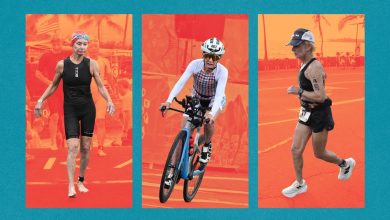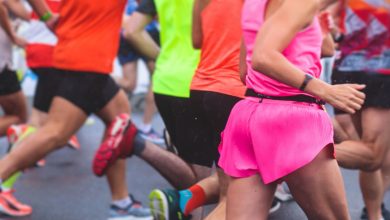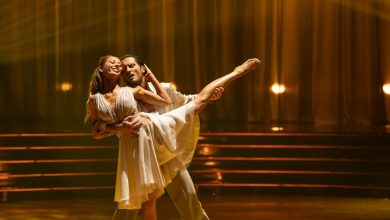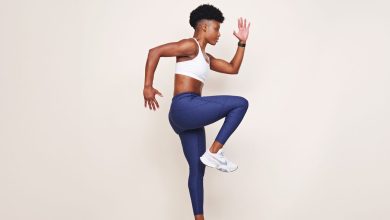Do You Really Get a ‘Better’ Workout With Lagree Than Pilates?
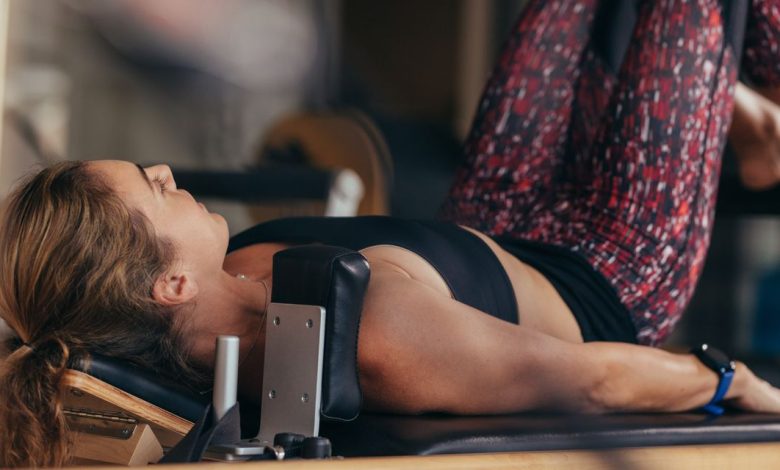
Discovering a workout that makes you feel joyful, strong, and athletic can seem as difficult and relentless as finding a lifelong partner. But when you finally cross paths with The One, it may be love at first sweat.
Exhibit A: After a brief break-up with exercise and some experimentation with indoor cycling, country singer Kelsea Ballerini fell in love with Lagree Fitness, a high-intensity, low-impact workout method designed to build muscular endurance.
“I do it as much as I can,” Ballerini told Women’s Health last fall. “I love how it makes me feel doing it—I feel strong. Having a good relationship with how I’m moving my body has changed everything for me.”
And it’s only continued. While touring for her latest album, Patterns, Ballerini told CN Traveler in July that she stuck to a scaled-back version of that routine, “bopping around” to local studios offering Lagree or Pilates—two separate, but often conflated fitness modalities.
Ballerini’s specific callout made us wonder: What’s the difference between the workouts, anyway? Keep reading for your Lagree vs. Pilates breakdown, including the benefits of each method, what to expect in the workouts, and answer to the burning Q: Is Lagree better than Pilates, really?
The Lagree vs. Pilates debate
Lagree Fitness (a.k.a. Lagree) and Pilates often get lumped together, but Sebastien Lagree, the creator of the eponymous method, tells SELF the two have little overlap. For the most part, they just share one common ancestor: a hulking piece of equipment called the reformer.
“My equipment is inspired from the reformer, but not the method,” he says. “The method has nothing to do with Pilates.”
Let’s back up. Lagree founded his namesake back in 1998, originally calling it Pilates Plus, while working at a Pilates studio. At the time, he was a bodybuilder and aspiring actor in Los Angeles, MacGyvering his studio’s reformers to help clients meet their (often aesthetic-based) goals. Over the years, Lagree launched multiple iterations of his own equipment—the Megaformer—and rebranded his method to SPX and finally Lagree Fitness. Despite the multiple name changes over the years, the idea that Lagree = Pilates stuck, and questions of whether one method is “better” the other continue to pop up.
So, it’s time to clear the air—here’s how Lagree stacks up against Pilates on a few very important factors:
1. Method
Both Lagree and Pilates are low-impact workouts, which can make them good choices for folks who have cranky joints, concerns like arthritis, or are recovering from injury, but the methodologies behind them are distinct.
Lagree describes his method as a circuit-based workout, blending resistance exercises with cardio training, on the Megaformer. It’s rooted in principles known as the “magic 10,” which include effective form, range of motion, tempo, duration, resistance, and more. Depending on your studio, your class might be a full-body workout or targeted to specific body parts, says Lagree. Expect to do fundamental moves like planks, lunges, and squats, as well as Lagree-specific exercises like “super lunge,” “catfish,” and “scrambled eggs.” (In case you were wondering: “Scrambled eggs” is reminiscent of a rainbow leg lift, only you’re kneeling on the Megaformer with a spring-loaded strap looped around your foot.)
Pilates, however, was created by Joseph Pilates in the 1920s under the name “Corrective Exercise”—fitting, since the method was often used as rehab for dancers—and later “Contrology,” Khetanya Henderson, a classical Pilates instructor and the founder of KKRU Pilates Studio & Wellness in Atlanta, tells SELF. “It’s really this idea that your powerhouse—your core—is the source of all of your strength,” she explains. “And if we can strengthen that, then everything else in the body can unite as one integrated unit.” It’s founded on six principles: control, concentration, centering, precision, breath, and flow, says Henderson.
Out of classical Pilates came plenty of spin-offs, including contemporary, modern, and athletic interpretations, says Henderson. In each classical Pilates class, you’ll go through set exercises in a specific order (the hundred, roll up, roll over, single-leg circle, and so on) on just a mat or a reformer. More contemporary or modern offerings may deviate from that set exercise sequence and incorporate dance-like elements, she says.
2. Equipment
The classic Pilates reformer consists of spring-loaded cables with handles or loops, a carriage with shoulder and head rests that slides up and down the frame, a footbar, and a small platform. In class, participants might sit or lie on the carriage, place their hands or feet in the straps, and perform exercises like leg circles, frog, or teaser, pushing against the springs’ resistance or fighting its pull.
It’s different from the Lagree Megaformer, which, as we mentioned above, was initially derived from the Pilates reformer. To help Megaformer users get into the correct position as quickly as possible (and ensure they’re getting the desired amount of resistance for a given exercise), Lagree says he added numbers, symbols, and lines on the carriage, rails, and platform. There are also handles and multiple anchoring points, dedicated spots to grab with your hands or place your feet during class. As a result, unlike with the reformer, participants have more stability (and peace of mind) while doing complicated balance exercises like the runner’s lunge or bear pike.
It’s important to mention that, while the mat and reformer are most commonly used in group Pilates settings, Henderson says there’s more to it. The method also utilizes apparatuses like the Cadillac, chair, trapeze table, magic circle, foot and toe correctors, and ladder barrel, each of which has its own benefits and can be used in one-on-one sessions.
3. Intended goals
With its focus on control, breath, and the powerhouse core, Pilates aims to support a stabilized spine and proper alignment of the pelvis, hips, and shoulders for improved functioning in your everyday life, says Henderson. It’s an integrated, full-body approach, so there’s an element of mindfulness, too, she notes. “It’s a sandwich of mobility, flexibility, strength, stabilization, breath, mental clarity, mind-body connection,” says Henderson. “It’s like a whole hoagie sandwich of all of it.”
On the flip side, Lagree says his method is based on building muscular endurance through time under tension, or how long your muscles produce force. You’ll spend at least a full minute activating a given muscle group, he notes. Training with more time under tension is not only key to improving your functional fitness (just think about how long your upper-body muscles need to be engaged while you carry your fresh laundry from the laundromat to your apartment) but it can also be an effective strategy for building muscle.
4. Intensity
Both Lagree and Pilates can feel high-intensity, but the experience is totally different.
For the most part, Lagree is a slow burn. In a typical class, you might perform one movement for two to 12 minutes straight, says Lagree. The reps themselves feel like they’re occurring in slow motion; one single rep, performed at a standard tempo of four counts, might take 16 to 20 seconds to complete. Rest breaks between reps? Don’t count on them. Expect your heart rate to climb thanks to this non-stop movement.
“Lagree is a muscular and also a mental endurance workout, because at one point, you realize that, ‘Okay, I can keep going or I could stop. I don’t have to stop, but I want to, because it’s [burning],’” he says. “That’s when all the benefits of Lagree start to come in. Lagree is a workout that is incredibly mental.”
However, the intensity and pace of a Pilates class vary a lot, based on the type of Pilates you’re doing (classical vs. contemporary) and how the instructor has choreographed their sequences. With classical classes, you don’t stop moving—after all, “flow” is one of the core principles of Pilates, says Henderson. You’ll seamlessly move from one exercise to the next, with these transitions feeling more like work than a breather, she says. “When I teach, we are sweating from minute number two all the way to minute 50 or 60,” says Henderson.
On the flip side, contemporary classes may not have as much “flow” from one move to the next; the transitions aren’t inherently baked into a set exercise sequence, so you may have more idle time (read: rest!) as you change your springs or switch focuses. Some contemporary studios also offer low-key classes centered around stretching with traditional Pilates apparatus.
So, is Lagree “better” than Pilates?
Nope! No single workout is inherently better than the other. In fact, Lagree himself suggests doing both his method and Pilates if you can swing it. “I have a lot of students who do both Lagree and real Pilates, and they’re having great results,” he says. “So I’m always an advocate of doing cross-training and doing Pilates or doing, you know, Lagree and yoga.”
If you had to pick between one of the two methods, consider your goals and how you move elsewhere in your fitness routine.
Pilates can be helpful if you sit hunched over a desk all day and, as a result, have tight hips and poor posture, says Henderson. The same goes for folks who wear uncomfortable shoes or heels on a regular basis. “Pilates, yes, is about core, but it’s also integrating and rebalancing the entire body,” says Henderson. “So we even address the feet and hands. We have equipment for feet and hands and toes and back realignment.”
You might see benefits from Pilates if you’re struggling with mobility or balance or you’re an athlete overtraining specific muscle groups, she adds. “There’s a lot of athletes doing Pilates right now, and part of that is because on one side of their workout regimen, they are working on these bigger muscles. Pilates works on the small muscles—the muscles that we don’t think are important but help us walk, run, stand, jump, sit down, lie down, roll over.” The list goes on and on.
On the flip side, you might try low-impact Lagree if you’re used to training at high intensities and want to continue getting that burn in as you age or develop joint issues, says the founder. You might choose Lagree if you’re looking to build up your muscular endurance and test out some unfamiliar movements (“giant spoon,” anyone?).
Better yet, says Henderson, “try them all. Try athletic, try contemporary, try Lagree—try it all and just see what feels the best. I think ultimately, we just want people to move their bodies.”
Related:
- 10 Things to Know Before You Take Pilates Classes
- 13 Pilates Benefits That Will Make You Want to Switch Up Your Workout
- A Beginner Pilates Workout You Can Do at Home
Get more of SELF’s great fitness content delivered right to your inbox.
